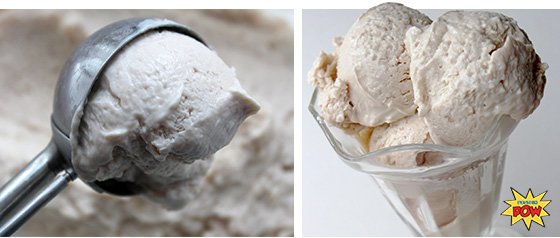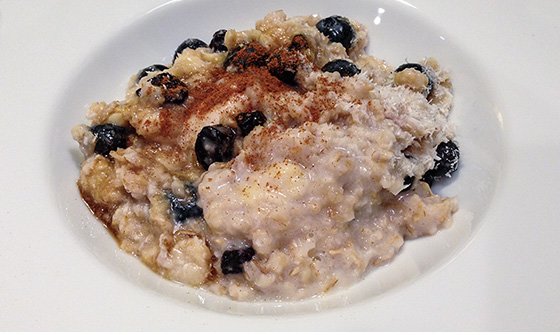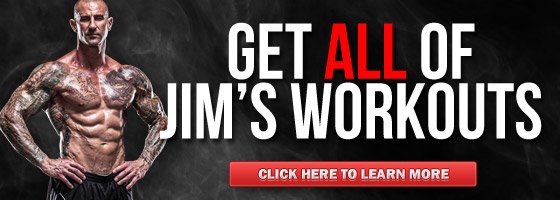To enter click on the link below
By Stephen Daniells Nutra Ingredients USA
"Our results indicate that probiotics are of potential therapeutic utility to counter obesity and diabetes" - Dr Hariom Yadav, et al.
A daily dose of probiotics may prevent weight gain and insulin resistance in mice, says a new study from scientists at the US National Institutes of Health (NIH) with implications for obesity and diabetes.
Daily consumption of the VSL#3 commercial probiotic product led to an increase in levels of the short chain fatty acid (SCFA), butyrate, which in turn stimulated the release of the appetite-suppressing hormone GLP-1 and reduced food intake and improved glucose tolerance in lab mice, according to findings published in The Journal of Biological Chemistry.
In an email to NutraIngredients-USA, lead author Hariom Yadav, PhD, from the National Institute of Diabetes and Digestive and Kidney Diseases at the NIH, said: "The novel finding of this study is that VSL#3 flora can increase butyrate production in the gut. We are now developing single strains that can produce higher butyrate levels, and can be used for designing new functional foods or medical formulations for obese and diabetics."
Probiotics and weight management
In 2006, Prof. Jeffrey Gordon and his group at Washington University in St. Louis reported in Nature (Vol. 444, pp. 1022-1023, 1027-1031) that microbial populations in the gut are different between obese and lean people, and that when the obese people lost weight their microflora reverted back to that observed in a lean person, suggesting that obesity may have a microbial component.
Dr Gordon and his group recently pushed back the scientific boundaries even further in this area. In an ‘elegant’ study, the St Louis-based scientists reported that probiotics in a yogurt did not colonize the gut microflora when studied in identical twins, but an additional study in mice revealed that ingestion of probiotic bacteria produced a change in many metabolic pathways, particularly those related to carbohydrate metabolism (Science Translational Medicine, Vol. 3, 106ra106).
The new study adds to this ever-growing and exciting area of research, noting that a blend of bacterial strains was associated with prevention of weight gain and insulin resistance in lab mice fed a high fat diet.
The product
The researchers used the VSL#3 product by Sigma Tau Pharmaceuticals, described by the company as a “potent probiotic medical food that delivers the highest available concentration of beneficial live bacteria of any probiotic in the world”. Four formulations are available, including capsules each with 112.5 billion live bacteria, packets each containing 450 billion live bacteria, double strength packets, and junior packets, each with 225 billion live bacteria.
Dr Yadav told us that, interestingly, his team's findings show that, while the current results relate to a medical food formulation, the changes to the gut microflora are similar to those reported previously for probiotic dietary supplements.
The VSL#3 formulations contain a combination of eight bacterial strains: Bifidobacterium breve, B. longum, B. infantis, Lactobacillus acidophilus, L. plantarum, L. paracasei, L. bulgaricus, and Streptococcus thermophiles.
Study details
Dr Yadav and his co-workers divided lab mice into low- and high-fat diet groups with or without additional probiotics for eight weeks.
Results showed that providing probiotics to the high-fat diet animals suppressed weight gain, equivalent to that of mice fed the low-fat diet. VSL#3 was also associated with smaller fat cell size, less fat deposition in the cells, lower blood glucose levels, and improved glucose and insulin tolerance, compared to the non-probiotic high-fat diet animals.
“VSL#3 significantly decreased the circulating levels of inflammatory cytokines i.e. IL-6, MCP-1 and TNF-a suggesting that VSL#3 reduced the inflammatory state that is often associated with obesity and insulin resistance,” they added. “These beneficial metabolic effects of VSL#3 were associated with a significant decrease in food intake.”
SATIN_scales
Additional study showed that GLP-1 levels significantly increased, with butyrate found to stimulate its release.
“Our findings allow us to propose a model that might explain the VSL#3 mediated improved metabolic effects. Probiotics (like VSL#3) modulate the gut flora composition (i.e. decreased firmicutes and increased bacteriodetes and bifidobacteria) and lead to improved metabolic efficacy. The altered gut microbiota stimulates differential production of SCFAs (like butyrate) that in turn promote GLP1 secretion […] to improve metabolic health and protect from obesity and diabetes,” wrote the researchers.
“The possibility that dietary supplementation of probiotics can modify the gut flora and result in changes in levels of short chain fatty acids that promote release of hormones like GLP1 will further stimulate research aimed at understanding the mechanism of action of other beneficial probiotics.”
Source: The Journal of Biological Chemistry
Published online ahead of print, doi: 10.1074/jbc.M113.452516
“Beneficial metabolic effects of a probiotic via butyrate induced GLP-1 secretion”
Authors: H. Yadav, J-H. Lee, J. Lloyd, P. Walter, S.G. Rane
Source: http://mobile.nutraingredients-usa.c...y#.Ud7JUEG1GvI
"Our results indicate that probiotics are of potential therapeutic utility to counter obesity and diabetes" - Dr Hariom Yadav, et al.
A daily dose of probiotics may prevent weight gain and insulin resistance in mice, says a new study from scientists at the US National Institutes of Health (NIH) with implications for obesity and diabetes.
Daily consumption of the VSL#3 commercial probiotic product led to an increase in levels of the short chain fatty acid (SCFA), butyrate, which in turn stimulated the release of the appetite-suppressing hormone GLP-1 and reduced food intake and improved glucose tolerance in lab mice, according to findings published in The Journal of Biological Chemistry.
In an email to NutraIngredients-USA, lead author Hariom Yadav, PhD, from the National Institute of Diabetes and Digestive and Kidney Diseases at the NIH, said: "The novel finding of this study is that VSL#3 flora can increase butyrate production in the gut. We are now developing single strains that can produce higher butyrate levels, and can be used for designing new functional foods or medical formulations for obese and diabetics."
Probiotics and weight management
In 2006, Prof. Jeffrey Gordon and his group at Washington University in St. Louis reported in Nature (Vol. 444, pp. 1022-1023, 1027-1031) that microbial populations in the gut are different between obese and lean people, and that when the obese people lost weight their microflora reverted back to that observed in a lean person, suggesting that obesity may have a microbial component.
Dr Gordon and his group recently pushed back the scientific boundaries even further in this area. In an ‘elegant’ study, the St Louis-based scientists reported that probiotics in a yogurt did not colonize the gut microflora when studied in identical twins, but an additional study in mice revealed that ingestion of probiotic bacteria produced a change in many metabolic pathways, particularly those related to carbohydrate metabolism (Science Translational Medicine, Vol. 3, 106ra106).
The new study adds to this ever-growing and exciting area of research, noting that a blend of bacterial strains was associated with prevention of weight gain and insulin resistance in lab mice fed a high fat diet.
The product
The researchers used the VSL#3 product by Sigma Tau Pharmaceuticals, described by the company as a “potent probiotic medical food that delivers the highest available concentration of beneficial live bacteria of any probiotic in the world”. Four formulations are available, including capsules each with 112.5 billion live bacteria, packets each containing 450 billion live bacteria, double strength packets, and junior packets, each with 225 billion live bacteria.
Dr Yadav told us that, interestingly, his team's findings show that, while the current results relate to a medical food formulation, the changes to the gut microflora are similar to those reported previously for probiotic dietary supplements.
The VSL#3 formulations contain a combination of eight bacterial strains: Bifidobacterium breve, B. longum, B. infantis, Lactobacillus acidophilus, L. plantarum, L. paracasei, L. bulgaricus, and Streptococcus thermophiles.
Study details
Dr Yadav and his co-workers divided lab mice into low- and high-fat diet groups with or without additional probiotics for eight weeks.
Results showed that providing probiotics to the high-fat diet animals suppressed weight gain, equivalent to that of mice fed the low-fat diet. VSL#3 was also associated with smaller fat cell size, less fat deposition in the cells, lower blood glucose levels, and improved glucose and insulin tolerance, compared to the non-probiotic high-fat diet animals.
“VSL#3 significantly decreased the circulating levels of inflammatory cytokines i.e. IL-6, MCP-1 and TNF-a suggesting that VSL#3 reduced the inflammatory state that is often associated with obesity and insulin resistance,” they added. “These beneficial metabolic effects of VSL#3 were associated with a significant decrease in food intake.”
SATIN_scales
Additional study showed that GLP-1 levels significantly increased, with butyrate found to stimulate its release.
“Our findings allow us to propose a model that might explain the VSL#3 mediated improved metabolic effects. Probiotics (like VSL#3) modulate the gut flora composition (i.e. decreased firmicutes and increased bacteriodetes and bifidobacteria) and lead to improved metabolic efficacy. The altered gut microbiota stimulates differential production of SCFAs (like butyrate) that in turn promote GLP1 secretion […] to improve metabolic health and protect from obesity and diabetes,” wrote the researchers.
“The possibility that dietary supplementation of probiotics can modify the gut flora and result in changes in levels of short chain fatty acids that promote release of hormones like GLP1 will further stimulate research aimed at understanding the mechanism of action of other beneficial probiotics.”
Source: The Journal of Biological Chemistry
Published online ahead of print, doi: 10.1074/jbc.M113.452516
“Beneficial metabolic effects of a probiotic via butyrate induced GLP-1 secretion”
Authors: H. Yadav, J-H. Lee, J. Lloyd, P. Walter, S.G. Rane
Source: http://mobile.nutraingredients-usa.c...y#.Ud7JUEG1GvI







.jpg)









.jpg)










